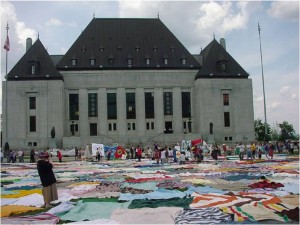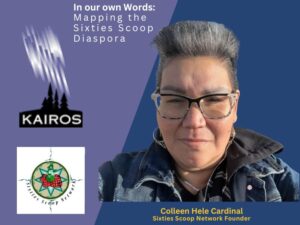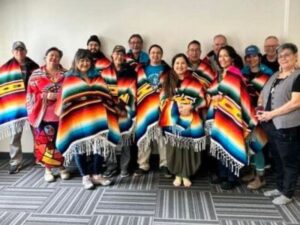Historic Supreme Court Decision Enriches Us All
June 26 was a great day for Indigenous rights and an encouragingly positive step for reconciliation between Indigenous and non-Indigenous peoples in Canada. Following a long legal battle, the Supreme Court of Canada, in an historic, unanimous decision, ruled that the Tsilhqot’in Nation has Aboriginal title over more than 1750 square kilometres of land in the heart of their traditional territory in British Columbia.
 This means the Tsilhqot’in Nation can decide how the land is used and managed and who will benefit from it; an important step in ensuring the nation’s health now and into the future.
This means the Tsilhqot’in Nation can decide how the land is used and managed and who will benefit from it; an important step in ensuring the nation’s health now and into the future.
Importantly, this ruling rejects the idea put forward by the British Columbia and federal governments that Aboriginal title to land exists only where continuous and intensive use of an area, such as a village site, can be proven. It also sets out clear parameters about the need for all levels of government to consult and receive consent from a First Nation when seeking the use of land to which that First Nation has title
The ruling has implications for major resource extraction or transportation projects, such as the Northern Gateway pipeline, that affect First Nations. The Court affirms that the Crown must either obtain the consent of the First Nation or show that there is a “compelling and substantial public purpose” for infringing on Aboriginal title. “Projects begun without consent on claimed Aboriginal title lands may need to be cancelled, if the title claims are eventually proven and the Crown can’t show justified infringement” according to a commentary published by the Olthius Kleer Toensend law firm.
All these aspects of the ruling are important steps toward achieving a just and respectful relationship between Indigenous and non-Indigenous peoples in Canada. Reconciliation includes the ability for Indigenous peoples to access an adequate land base, one where they have jurisdictional control and can enjoy collective rights. This case will help other First Nations to have jurisdiction over their lands recognized in areas where no treaties exist.
The Tsilhqot’in Nation persevered in this legal challenge for more than two decades and successfully rallied both Indigenous and non-Indigenous support. Some of those who intervened in the case were the Tsilhqot’in’s non-Indigenous neighbours who live on the land in question and who said that they would welcome the Supreme Court’s recognition of Tsilhqot’in title over the land. KAIROS member CFSC was also an intervenor. In a press release, Grand Chief Stewart Phillip said that “as parties supporting the Tsilhqot’in in this case, we worked collectively to ensure the Supreme Court of Canada would understand that recognizing Indigenous Title and Rights do not diminish Canadian society, it enriches it.”
All of us as Canadians have been enriched by this decision.
In 2001 KAIROS churches and networks laid blankets in front of the Supreme Court in Ottawa in support of Aboriginal title and rights.







